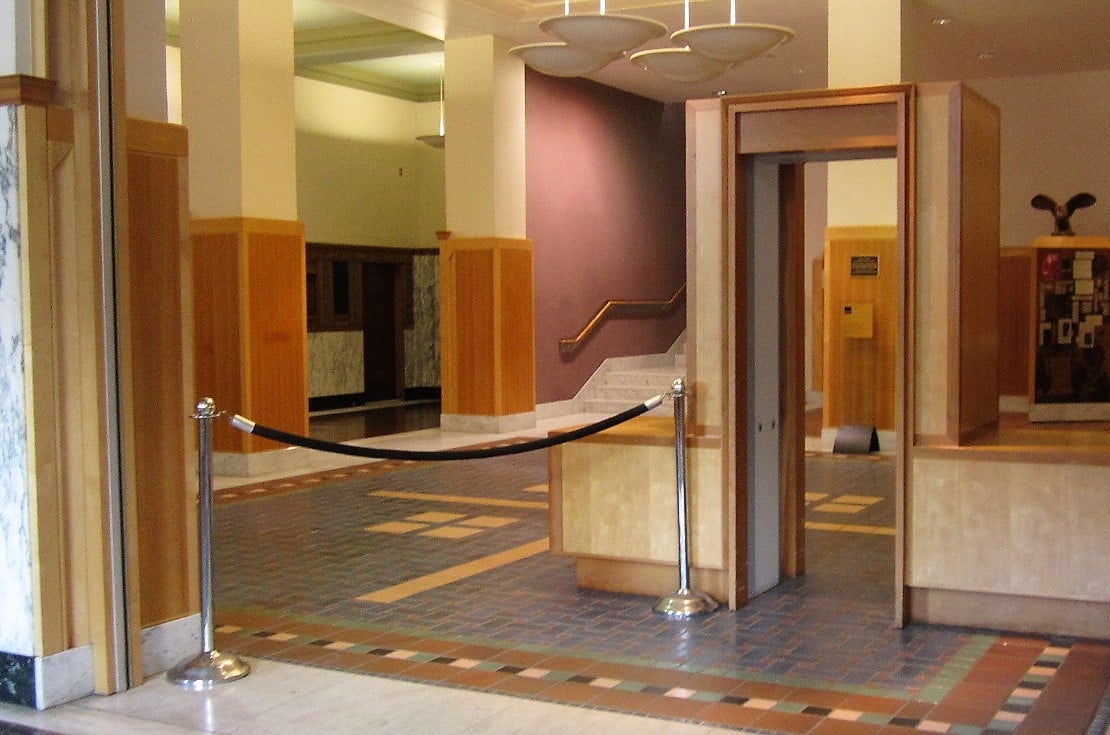This is the third and final installment in our series on applying Americans with Disabilities Act (ADA) requirements in courthouse renovation projects. In the two previous courthouse accessibility posts, I discussed accessibility requirements as they apply to the main courthouse entrance and the courtroom itself. Now, we will review accessibility requirements for courthouse security screening areas.
Accessibility in Courthouse Security Screening Areas
The Americans with Disabilities Act Accessibility Guidelines (ADAAG) apply to all courthouse areas and require an accessible interior path from the entry point to all public services. Therefore, the courthouse circulation components affected by this requirement include courthouse security screening areas and secure entrances, lobbies and corridors, doors and operating hardware, and elevator access and controls.
Most of these circulation components are not unique to courthouses and can be addressed in the same standardized manner as in other public buildings. The circulation component most likely to present challenges to ADA compliance in courthouses is the courthouse security screening area for the public and staff members, the secured entrance for prisoners, and the secured entrance for judges.
Difficulties in applying accessibility requirements to public courthouse security screening areas are principally because magnetometers are not sized to accommodate the passage of wheelchairs. The limited space for separate security screening facilities for wheelchairs in existing main entry vestibules often exacerbates this.
However, if room permits, the first option to consider is an alternate accessible route within or near the station that allows for the passage of wheelchairs around the magnetometer combined with convenient monitoring by courthouse security staff.
Courthouse Security Screening Example
A simple but effective example of this approach is the Louisiana Courthouse public screening area shown in the photo. When I last visited this courthouse, I immediately entered the security screening station area behind an individual in a wheelchair. I was particularly impressed with how the design of the screening area readily accommodated the passage of the wheelchair around the magnetometer without requiring the occupant to leave the wheelchair and the subsequent ease of monitoring by security staff.
magnetometer without requiring the occupant to leave the wheelchair and the subsequent ease of monitoring by security staff.
Existing building conditions, such as limited space or the need to use stairways, may limit the application of accessibility requirements in the entrances for prisoners and judges.
When existing building conditions restrict the opportunity to provide accessible secured building entrances for prisoners, law enforcement personnel may need assistance instead of using an accessible public entry. Conversely, for situations where the restricted hall for judges cannot accommodate accessibility compliance standards, disabled judges may elect to use accessible public access.
It should be kept in mind that while accommodating convenient circulation for people with disabilities is essential, security in the courthouse is also necessary and should not be compromised. As we have seen in the previous two posts, reconciling accessibility requirements with historic preservation objectives and courtroom space constraints is best accomplished through creative planning and design.
__________________________________________________________
Click the image to download our Courtrooms and Chambers: Conceptual Design and Analysis eBook.





.jpg)
.jpg)
.jpg)
.jpg)
.jpg)
.jpg)


.jpg)
.jpg)
-1.jpg)
.jpg)
.jpg)
.jpg)
.jpg)
.jpg)

